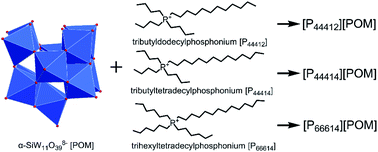Phosphonium-based ionic liquids as antifungal agents for conservation of heritage sandstone†
Abstract
With a view to preventing fungal deterioration of historical stone artworks, we report the use of phosphonium-based ionic liquids (ILs) as potent antifungal agents against dematiaceous fungi commonly found on heritage stones. Three ILs: tributyldodecylphosphonium polyoxometalate [P44412][POM], tributyltetradecylphosphonium polyoxometalate [P44414][POM], and trihexyltetradecylphosphonium polyoxometalate [P66614][POM] were prepared and their thermal stabilities and in vitro antifungal activities were evaluated. From the ramped temperature thermogravimetric analysis and antifungal experiments it can be clearly observed that the alkyl chain length of the tetraalkylphosponium cation has a significant influence on the thermal and antifungal properties. The thermal stability and antifungal activity decreased as the number of carbon atoms of the alkyl substituents increased and, thus, followed the order [P44412][POM] > [P44414][POM] > [P66614][POM]. In addition, inoculation of four fungal species on IL-coated sandstone surfaces showed significant inhibition of fungal growth, endowing the materials with potential applications in heritage sandstone conservation.



 Please wait while we load your content...
Please wait while we load your content...